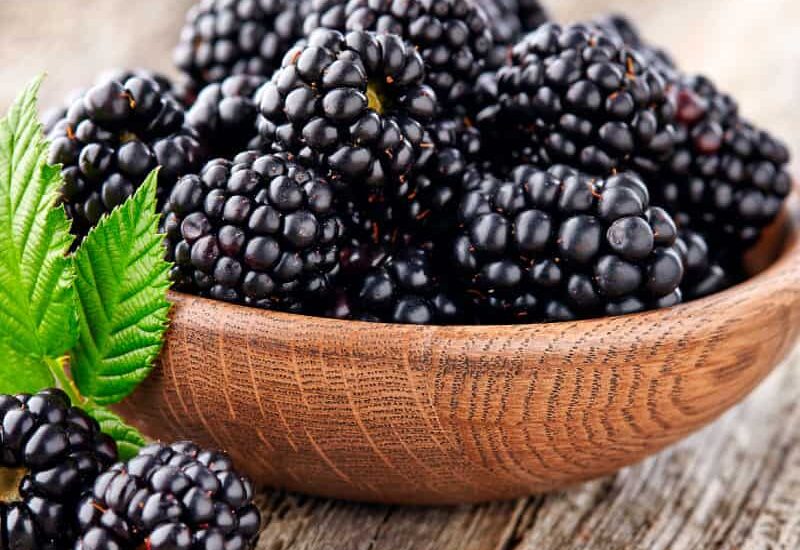The global mulberry market is projected to surpass USD 26,449.8 million by 2024 and is set to reach USD 42,434.9 million by 2034, growing at a compound annual growth rate (CAGR) of 4.8%.
Once considered a niche ingredient, mulberries are now becoming a prominent feature in the food and beverage industry. This surge in popularity is fueled by a combination of shifting consumer preferences and evolving market trends.
Health-conscious consumers are driving the surge in demand for superfoods, and mulberries are emerging as a top contender. Packed with antioxidants, vitamins, minerals, and dietary fiber, mulberries not only offer significant health benefits but also provide a versatile ingredient for chefs and a nutritious choice for diners.
In addition to their health advantages, mulberries bring a distinct flavor profile—a delightful blend of sweet and tart—that enhances menus with a fresh, innovative touch. This unique flavor enables chefs to craft creative dishes and distinguish themselves in a competitive culinary market.
The visual appeal of mulberries is also noteworthy. Their striking colors, particularly in the black varieties, can significantly enhance the presentation of dishes, making them more attractive to customers.
But the mulberry market extends beyond just flavor and aesthetics. For some businesses, local sourcing of mulberries offers a strategic advantage. Depending on the region, locally grown mulberries can be more readily available and cost-effective compared to imported varieties, leading to potential savings for both businesses and consumers.
As the market continues to evolve, various strategies are being employed to capture a larger share. Some companies are innovating with new mulberry-based products, while others are focusing on education and building strong brand identities. Collaborations with chefs and restaurants are also increasing the fruit’s visibility and appeal.
Overall, the mulberry market is on a promising growth trajectory. With its unique flavor, health benefits, visual appeal, and the advantages of local sourcing, mulberries are set to become a key ingredient in a range of sectors, from health food stores to high-end restaurants.
Get in Touch for Expert Analysis: Connect with Our Specialist on Email: sales@futuremarketinsights.com
Competitive Landscape
Participants in the mulberry market are implementing a range of strategies to capture a larger market share. Leading companies are developing new products featuring mulberries, targeting diverse consumer segments. These innovations include mulberry-infused beverages, snacks, health supplements, and even beauty products.
Emphasizing the health benefits of mulberries, such as their antioxidant properties, potential blood sugar regulation, and immune system support, is a key strategy to attract health-conscious consumers. Additionally, companies are exploring partnerships with local growers to secure a reliable supply and potentially reduce costs, which is especially beneficial in regions with established mulberry cultivation.
Industry Updates
- In March 2024, Nestle introduced a new milk powder that includes mulberry leafy extract, vitamin B, tryptophan, and minerals in China. These constituents are expected to support the quality of sleep of Chinese residents.
- In March 2023, Arthur Blick, an ex motocross champion, released the latest wine brand called “Blick Mulberry Wine”.
Leading Mulberry Companies
- BioSpectrum
- Fuji-Sangyo
- Natural Factors
- Specialty Natural Products Co.
- Pure Ingredients Ltd
- Twinstarts
- Hunan Warrant
- Geneham Pharmaceutical
- Xian Xiaocao
- Zhejiang Wecan Bio
- Others
Key Segments of Market Report
By Product Type:
Mulberries are divided on the basis of type into black, red, and white.
By Nature:
Mulberries are available in organic and conventional varieties across the globe.
By Form:
Different forms of mulberry available include fruit, raw/fresh, processed, frozen/chilled, canned, dehydrated, pulp, leaves, and leaf extract.
By End Use:
Various end uses of mulberry include households, food service, the food industry, infant formula, sports nutrition, the beverage industry, dietary supplements, animal feed, the pharmaceutical industry, personal care, and cosmetics. The food industry is further segmented into bakery and confectionary, convenience food, jams, jellies, and pickles, dressings, dips, and condiments, and others (frozen desserts, snacks, and cereals).
By Region:
By region, the mulberry market is analyzed in key regions of North America, Latin America, Europe, East Asia, South Asia, Pacific, and the Middle East and Africa.
About Future Market Insights (FMI)
Future Market Insights, Inc. (ESOMAR certified, recipient of the Stevie Award, and a member of the Greater New York Chamber of Commerce) offers profound insights into the driving factors that are boosting demand in the market. FMI stands as the leading global provider of market intelligence, advisory services, consulting, and events for the Packaging, Food and Beverage, Consumer Technology, Healthcare, Industrial, and Chemicals markets. With a vast team of over 400 analysts worldwide, FMI provides global, regional, and local expertise on diverse domains and industry trends across more than 110 countries.
Contact Us:
Future Market Insights Inc.
Christiana Corporate, 200 Continental Drive,
Suite 401, Newark, Delaware – 19713, USA
T: +1-845-579-5705
For Sales Enquiries: sales@futuremarketinsights.com
Website: https://www.futuremarketinsights.com
LinkedIn| Twitter| Blogs | YouTube

